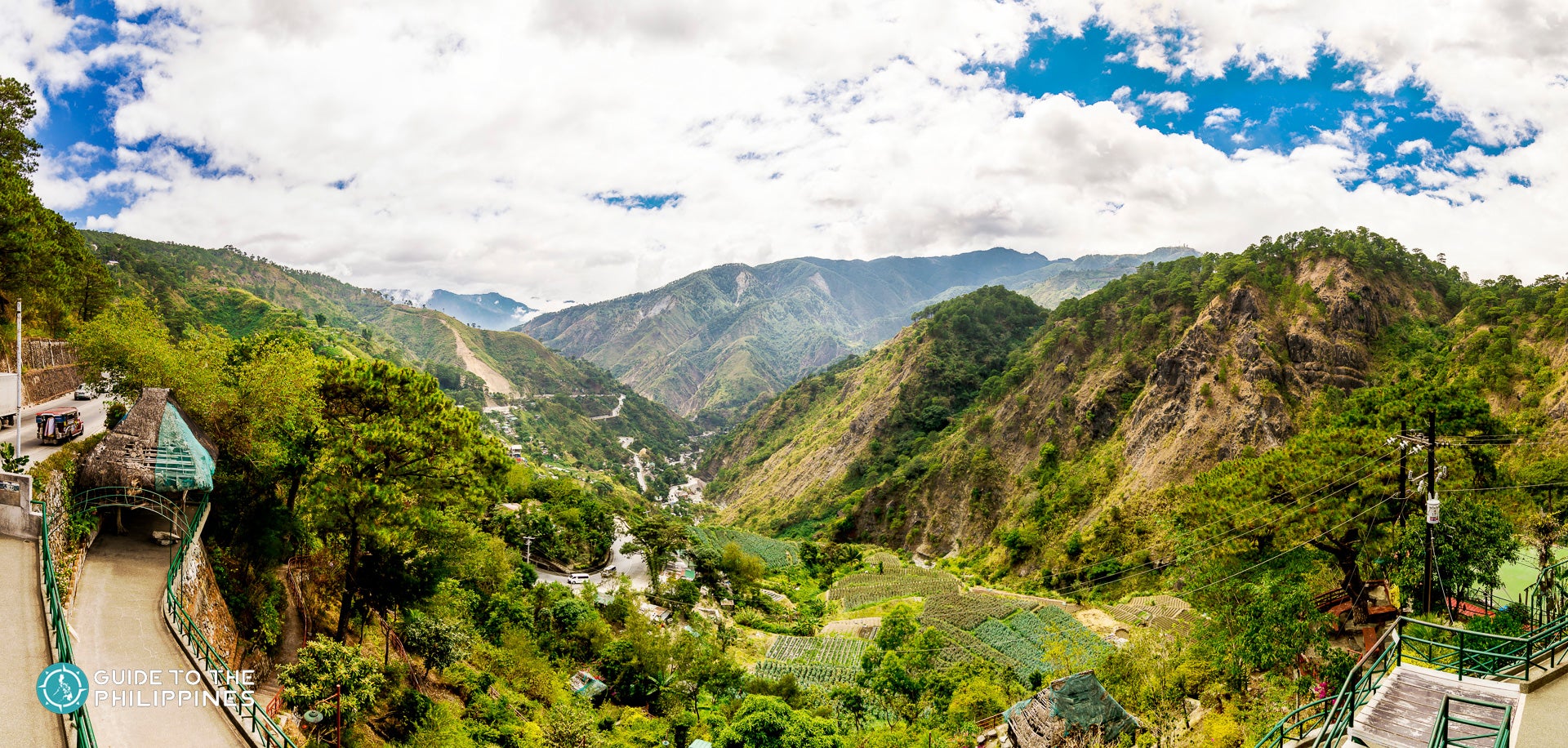
If there’s any nation in the world with the sweetest of sweet-tooths, they would have to be Filipinos. In the Philippines, sweet treats are enjoyed throughout the day, both as desserts and as snacks.
The local term for dessert in the Philippines is “pang himagas,” but generally most Filipinos use the word “dessert” as well. Some Philippine desserts have become so iconic that they're also included in food tours especially for international travelers.
Just like with most of the Philippines' cuisine, Filipino desserts draw influences from China, Spain, America, Japan, and Islamic culture.
The Philippines did not have a pronounced dessert culture in the early days, but as the years went on, it became more fashionable to enjoy dessert after a meal. This why a lot of Filipino snack recipes have now been converted to desserts.
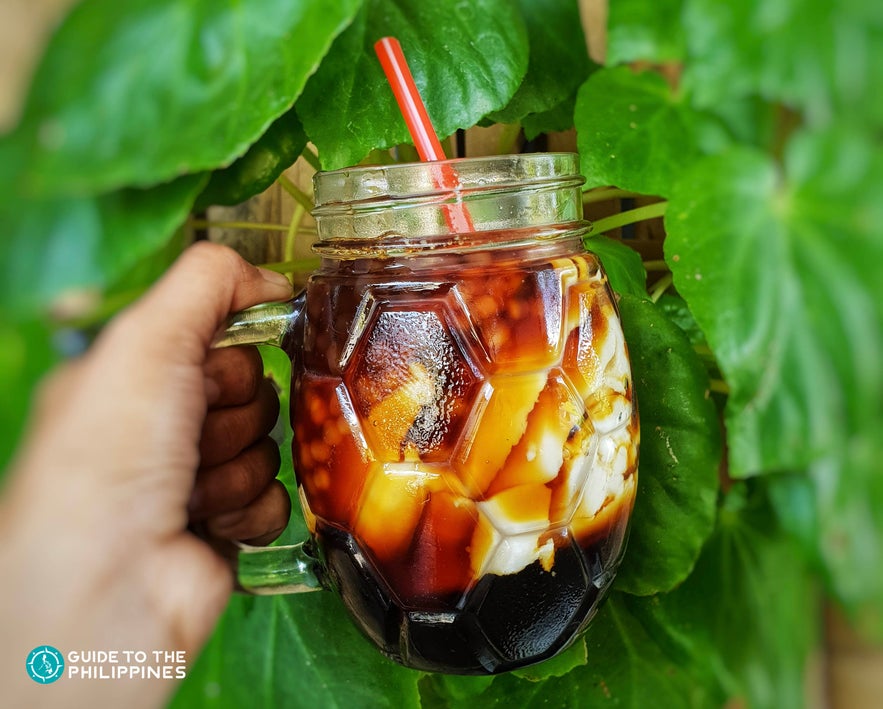
Filipinos enjoy a range of temperatures for their desserts, ranging from frozen, iced, room temperature, warm, and even hot. In a bit of irony, despite the Filipino penchant for sweet things, one of the most popular compliments one can give a dessert in the Philippines is, “it’s not too sweet.”
Here are just some of the most beloved desserts in the Philippines that you should try:
Iced or Cold Philippine Desserts
As a warm and tropical country, it is only natural that the most popular desserts in the Philippines would be served cold. These are all very much loved, especially when the hot Philippine summers arrive:
Halo-Halo
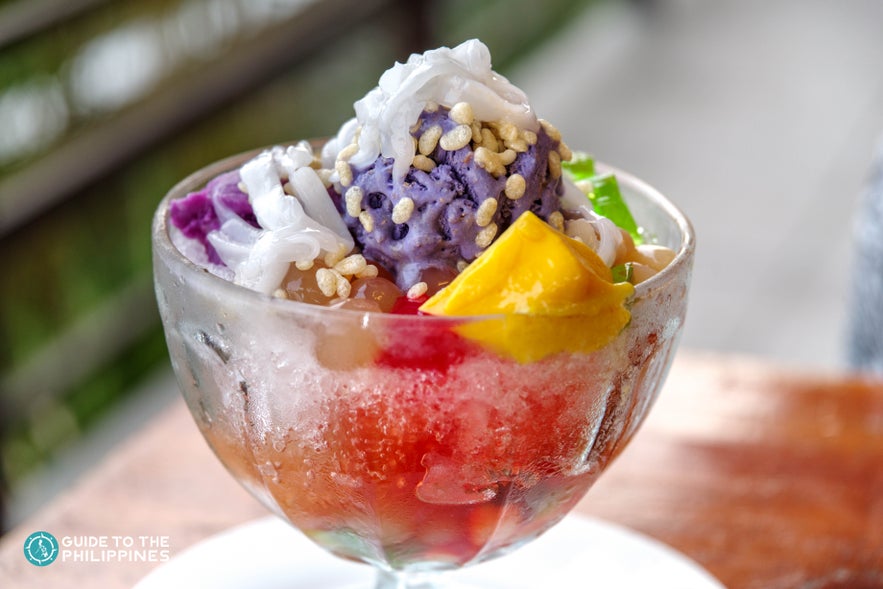 It could easily be considered as not only one of the kings of Filipino desserts but of the entire cuisine as well. Various sweetened fruits, beans, and jellies are topped with finely crushed ice and evaporated milk is poured over the top. Sometimes, it is also topped with ice cream.
It could easily be considered as not only one of the kings of Filipino desserts but of the entire cuisine as well. Various sweetened fruits, beans, and jellies are topped with finely crushed ice and evaporated milk is poured over the top. Sometimes, it is also topped with ice cream.
The name halo-halo literally translates as “mix-mix,” not only to describe the mix of sweet ingredients inside, but it also refers to the best way to enjoy the dessert. One is expected to use a spoon and mix everything thoroughly to fully enjoy the halo-halo experience.
There are hundreds of varieties of this dessert, the ingredients depending on the maker and the region they reside in. The Bicol variety, for example, has halo-halo topped with grated processed cheese, while a version in Iloilo uses ice made with coconut water, and a version in Pampanga uses only three ingredients.
Leche Flan
Milk, sugar, and eggs are steamed to make a luscious flan topped with caramel. Leche flan is very similar to the French creme caramel, but the Filipino version uses mostly egg yolks. The more traditional ones also have dayap (Philippine lime) zest in the flan. Some versions of the halo halo actually list leche flan as an ingredient.
Buco Pandan
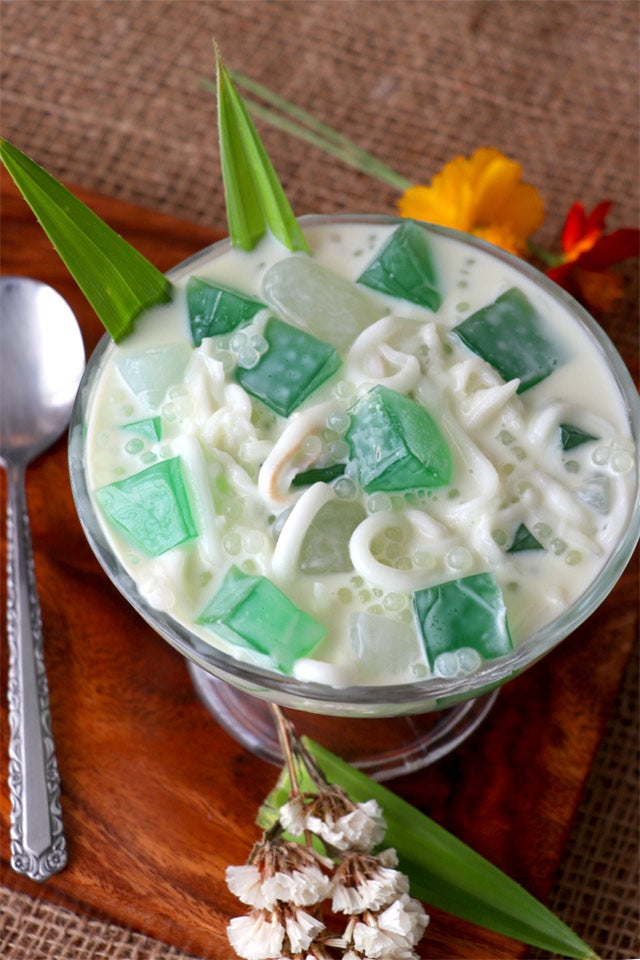 Photo by Foxy Folksy
Photo by Foxy Folksy
Cubes of gelatin flavored with pandan leaves are mixed with young coconut strips and cream and then served either chilled or frozen. The combination of the fragrant pandan leaves and the subtle taste of coconut form an irresistible combination and it has made this dessert a regular in most feast or celebration menus.
Adding more ingredients like nata de coco (coconut jelly), sago (tapioca pearls) makes another variation of the dish called “buco salad.” If you're too lazy to chew, there are also drink versions of buco pandan and buco salad, where fresh milk is added.
Mais Con Yielo, Saba Con Yielo & Sago't Gulaman
From the family of the halo-halo, these are her more simple cousins. Mais (corn kernels) or minatamis na saba (cardava bananas cooked in sugar) are topped with crushed ice. Evaporated milk is then poured over the top.
More and more crushed ice “cousins" have popped up, including mango, avocado, or even sweet potato cooked in sugar. Meanwhile, on the drink side, Sago’t Gulaman is a crushed ice drink with brown sugar syrup, tapioca pearl and jello made from agar agar.
Sorbetes
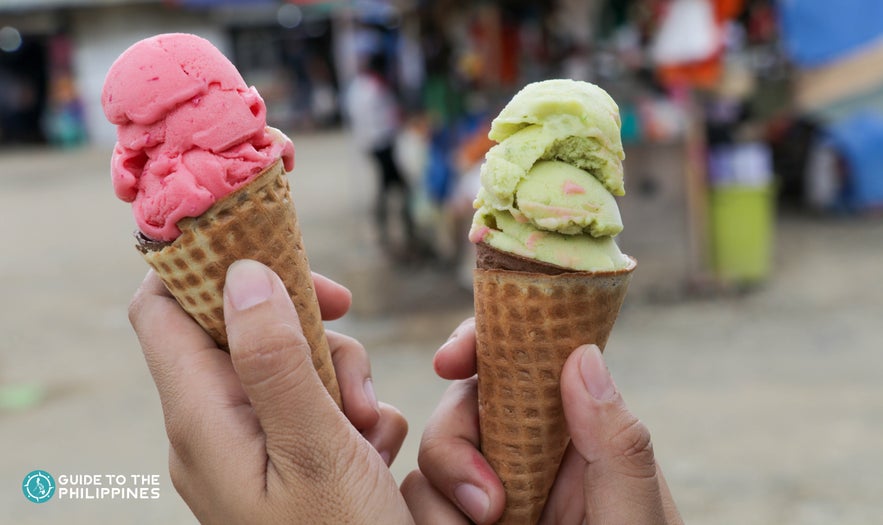 Locals call it “dirty” ice cream, but it is purely a name that just caught on. Locally made ice cream, which traditionally uses carabao’s (buffalo’s) milk are being sold from rolling ice cream carts going around the streets all over the country.
Locals call it “dirty” ice cream, but it is purely a name that just caught on. Locally made ice cream, which traditionally uses carabao’s (buffalo’s) milk are being sold from rolling ice cream carts going around the streets all over the country.
Very affordable, one normally orders a small cone and the sorbetero (ice cream vendor) will fill it with 7-9 small scoops of ice cream, usually in 3 flavors. Of particular note is the cheese ice cream, a salty-sweet combination of sweet cream and chunks of salty processed cheddar cheese.
Go full local by ordering the Filipino ice cream sandwich, where scoops of sorbetes are placed in a hamburger bun (yes, you read that correctly).
Avocado/Mango Milk
This isn’t a dessert you can get in restaurants, but millions of Filipino households enjoy it. Cold (or sometimes frozen) chunks of fresh avocado or mango are placed in a glass and fresh milk is poured into it.
Then, a spoon is used to smash the fruit and mixed with the milk to form a chunky, milky treat. While it will not blaze a culinary trail in fine dining restaurant, hardly any Filipino can resist this treat from their childhood.
Philippine Mango
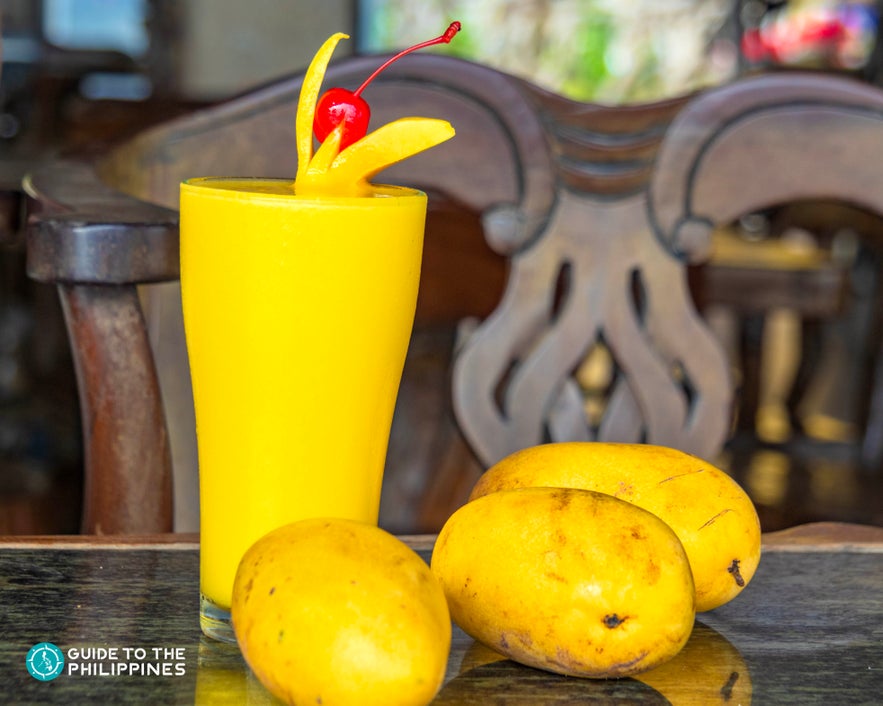
This fruit certainly deserves its own spot on this list. Forget what you know about mangoes. Whichever mango you’ve had before, it will pale in comparison to the ones from the Philippines.
The tender flesh is super sweet and its flavors make it great enjoyed cold on its own, as a juice or as a puree served with tapioca, called mango sago. Of particular note are the mangoes from the Guimaras region. When those are in season, eating those mangoes is like eating candy.
Seasonal Philippine Fruits
 Aside from mangoes, the Philippines boasts of several delicious fruits that would be perfect as dessert as well. Make sure to try buco (young coconut), langka (jackfruit), durian, mangosteens, pineapples, bananas are just some of the examples. Some of the more interesting ones to try would be lanzones, kamias, duhat.
Aside from mangoes, the Philippines boasts of several delicious fruits that would be perfect as dessert as well. Make sure to try buco (young coconut), langka (jackfruit), durian, mangosteens, pineapples, bananas are just some of the examples. Some of the more interesting ones to try would be lanzones, kamias, duhat.
Daral
A dessert from the Southern region of Mindanao, young coconut strips are cooked down with sugar and then wrapped in a crepe-like wrapper. The relatively bland crepes are the perfect foil for sweetened coconut strips. While it may not be as easy to find, these will be worth the hunt.
Plantanillas
In Pampanga, egg crepes are filled with pastillas de leche, carabao’s milk cooked down with sugar to make milk candy. Each crepe is quite small and delicious, so it is not unheard of to down half a dozen of these at a time.
Hot or Warm Philippine Desserts
Despite the hot and humid weather, a lot of the popular Filipino sweet treats are served warm or sometimes even hot. Most of the world sees dessert as something cold, but these can certainly change one’s mind especially when it's the rainy or typhoon season in the Philippines:
Ginataang Bilo Bilo
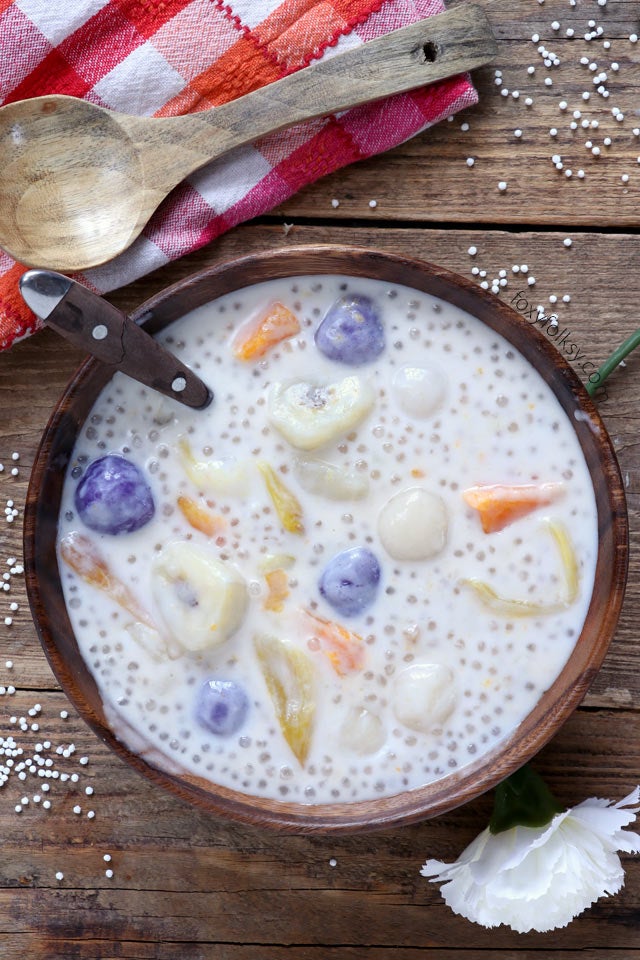
Photo by Foxy Folksy
Also called sampelot or ginataang halo-halo, this is the halo-halo’s hot version. Chunks of cardava bananas, sweet potatoes, taro, tapioca pearls, jackfruit, and glutinous rice balls are all cooked together in coconut milk to form a lovely, sweet, thick stew that is best enjoyed served warm. It was mostly known as a snack, but more and more, it is also enjoyed as a dessert after meals.
Jampok
A dessert from the Southern region of the Philippines, bananas are mashed and mixed with sugar and flour and then deep-fried. When mashed well, the banana fritters are chewy, almost al dente, making this dessert a textural treat.
It may not be as commonly available, but if one can imagine a chewy banana bread, jampok is worth the trouble of finding it.
Kakanin
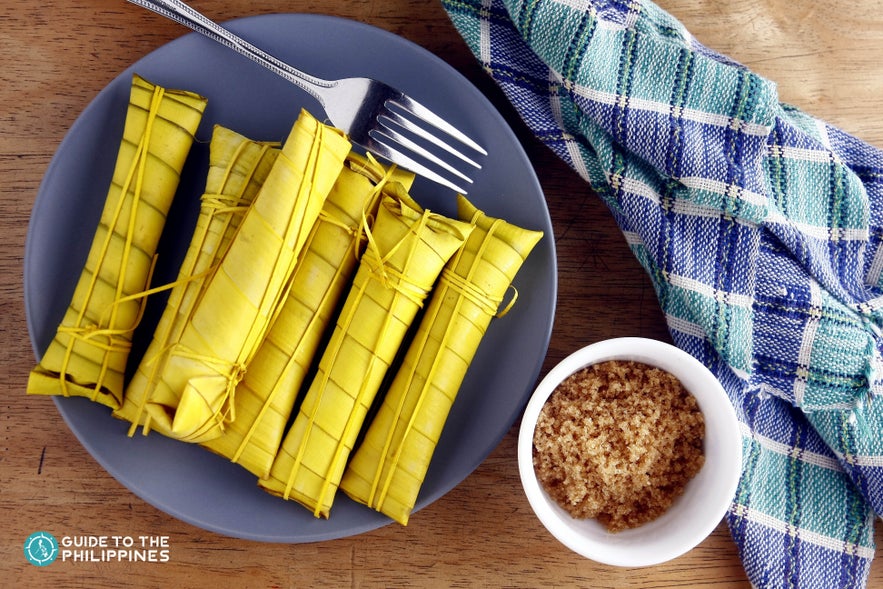 Kakanin is the blanket term for treats made with glutinous rice or crops. The most popular ones include suman (glutinous rice wrapped in banana leaves and steamed), biko (glutinous rice cooked with coconut milk and sugar), and kutsinta (steamed tapioca flour cake served with shredded coconut).
Kakanin is the blanket term for treats made with glutinous rice or crops. The most popular ones include suman (glutinous rice wrapped in banana leaves and steamed), biko (glutinous rice cooked with coconut milk and sugar), and kutsinta (steamed tapioca flour cake served with shredded coconut).
Other favorite kakanin by locals include pichi pichi (cassava flour balls rolled in either grated coconut or processed cheddar cheese), bibingka (glutinous rice cake baked in a charcoal oven) and puto (steamed rice flour and milk cakes topped with cheese).
While most kakanins started out as snacks, a lot of them are now enjoyed as desserts as well.
Banana Cue
 Sold on a lot of street corners in the Philippines, cardava bananas are fried in margarine and sugar to make banana cue.
Sold on a lot of street corners in the Philippines, cardava bananas are fried in margarine and sugar to make banana cue.
The sugar forms a crunchy candy-like coating on the bananas, giving them a lovely textural contrast. The best part is that these are served on sticks, so you can eat them on the go.
Taho

Also a popular breakfast food or snack, taho is Japanese style soft tofu served with a muscovado sugar syrup and tapioca pearls.
While these can be enjoyed cold, the more popular version remains to be the warm one. Be on the lookout for the strawberry version (usually found in Baguio) or the ube (purple yam) versions as well.
Create Your Filipino Dessert Bucket List
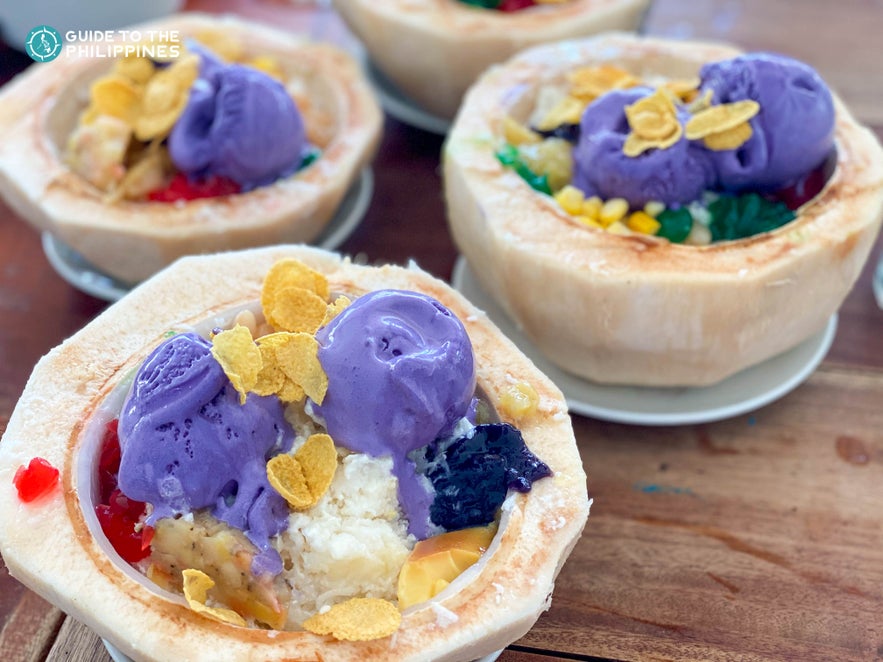 Whether it’s to cap off a wonderful meal or just to satisfy an insatiable sweet tooth, Filipino cuisine has the dessert for each occasion. The best part? Each of these desserts have different versions, depending on the region they are found in and that means a never-ending journey of enjoyment.
Whether it’s to cap off a wonderful meal or just to satisfy an insatiable sweet tooth, Filipino cuisine has the dessert for each occasion. The best part? Each of these desserts have different versions, depending on the region they are found in and that means a never-ending journey of enjoyment.

